Understanding Uterine Abnormalities and Fertility

The uterus plays a crucial role in reproduction—it’s the home where a fertilized egg implants and develops into a baby. However, some women experience uterine abnormalities that can affect fertility and make conception more challenging. Uterine abnormalities are...
The uterus plays a crucial role in reproduction—it’s the home where a fertilized egg implants and develops into a baby. However, some women experience uterine abnormalities that can affect fertility and make conception more challenging. Uterine abnormalities are structural issues within the uterus that may be congenital (present at birth) or acquired over time. In this blog, we will explore the different types of uterine abnormalities, how they impact fertility, and the treatment options available to help women overcome these challenges.
1. What Are Uterine Abnormalities?
Uterine abnormalities are structural changes in the shape, size, or lining of the uterus that can impact a woman’s ability to conceive or maintain a pregnancy. While some women may not experience any symptoms, others might have difficulty conceiving, experience repeated miscarriages, or suffer from painful periods and abnormal bleeding. These abnormalities can either be congenital (meaning a woman is born with them) or develop later in life due to conditions like fibroids or scar tissue.
2. Types of Uterine Abnormalities
- Congenital Uterine Abnormalities
Congenital uterine abnormalities, also known as Müllerian duct anomalies, are issues in the development of the uterus that occur before birth. These conditions are relatively rare but can significantly affect fertility.- Septate Uterus: This is one of the most common congenital abnormalities. In a septate uterus, the uterine cavity is divided by a wall or "septum" of tissue, which can prevent a fertilized egg from implanting or cause recurrent miscarriages.
- Bicornuate Uterus: In this condition, the uterus has two “horns,” creating a heart-shaped or partially divided uterus. While many women with a bicornuate uterus can carry a pregnancy, this abnormality can increase the risk of miscarriage or preterm labor.
- Unicornuate Uterus: This occurs when only one side of the uterus develops, creating a smaller, asymmetrical uterus. Women with a unicornuate uterus may have reduced fertility and are at higher risk for miscarriage.
- Uterine Didelphys: Also known as a double uterus, this condition involves two separate uterine cavities. While some women may still carry a pregnancy to term, the risk of complications such as miscarriage or preterm birth is higher.
- Acquired Uterine Abnormalities
Acquired abnormalities develop later in life, often due to hormonal changes, infections, or other conditions affecting the uterus.- Fibroids (Leiomyomas): Fibroids are noncancerous growths that develop in or around the uterus. They vary in size and location, and while many women with fibroids can conceive, large or strategically placed fibroids can block the fallopian tubes or interfere with implantation.
- Polyps: Uterine polyps are small, soft growths in the uterine lining (endometrium). They can cause irregular menstrual bleeding and may interfere with embryo implantation, reducing fertility.
- Asherman’s Syndrome: This condition occurs when scar tissue (adhesions) forms inside the uterus, often after surgery like a dilation and curettage (D&C) or due to infections. Asherman’s syndrome can block the uterine cavity, making implantation difficult or increasing the risk of miscarriage.
3. How Do Uterine Abnormalities Affect Fertility?
The impact of uterine abnormalities on fertility depends on the type, size, and location of the abnormality. Some abnormalities may prevent the embryo from implanting properly, while others may lead to complications later in pregnancy, such as recurrent miscarriage or preterm labor. Here's how various uterine abnormalities can affect fertility:
- Implantation Challenges: A uterine septum or fibroid within the cavity can prevent the fertilized egg from implanting in the uterine lining.
- Recurrent Miscarriages: Conditions like a septate or bicornuate uterus can cause the embryo to implant in an area with poor blood supply, increasing the risk of miscarriage.
- Obstructed Blood Flow: Fibroids or scar tissue can restrict blood flow to the uterus, affecting the nourishment of the embryo.
- Preterm Labor: Some structural abnormalities, such as a bicornuate uterus, may limit the space available for a growing baby, leading to preterm labor or complications during delivery.
4. Diagnosing Uterine Abnormalities
Fortunately, modern medical technology allows for the accurate diagnosis of uterine abnormalities through various imaging techniques:
- Ultrasound: A transvaginal ultrasound provides detailed images of the uterus and can detect abnormalities like fibroids or uterine shape issues.
- Hysterosalpingography (HSG): This X-ray procedure involves injecting a dye into the uterus to check for blockages or abnormalities in the uterine cavity and fallopian tubes.
- MRI (Magnetic Resonance Imaging): An MRI provides more detailed images of the uterine structure and is often used to diagnose congenital abnormalities.
- Hysteroscopy: In this procedure, a thin, lighted tube is inserted through the cervix into the uterus, allowing direct visualization of the uterine cavity and any abnormalities such as polyps or scar tissue.
5. Treatment Options for Uterine Abnormalities
While some uterine abnormalities may not require treatment, particularly if they don't affect fertility, others can be treated to improve the chances of conception and a successful pregnancy.
- Surgical Correction: Procedures like hysteroscopic surgery can remove a uterine septum, polyps, or fibroids within the uterine cavity. This minimally invasive surgery is highly effective in restoring fertility.
- Myomectomy: For women with large or problematic fibroids, a myomectomy is performed to remove the fibroids while preserving the uterus.
- Hormonal Treatment: Hormonal medications may help shrink fibroids or polyps, or reduce the growth of scar tissue in cases like Asherman’s syndrome.
- Assisted Reproductive Technologies (ART): For women with severe uterine abnormalities, assisted reproductive techniques like in vitro fertilization (IVF) may offer the best chance of conception. In some cases, gestational surrogacy may be recommended.
1. What Are Uterine Abnormalities?
Uterine abnormalities are structural changes in the shape, size, or lining of the uterus that can impact a woman’s ability to conceive or maintain a pregnancy. While some women may not experience any symptoms, others might have difficulty conceiving, experience repeated miscarriages, or suffer from painful periods and abnormal bleeding. These abnormalities can either be congenital (meaning a woman is born with them) or develop later in life due to conditions like fibroids or scar tissue.
2. Types of Uterine Abnormalities
- Congenital Uterine Abnormalities
Congenital uterine abnormalities, also known as Müllerian duct anomalies, are issues in the development of the uterus that occur before birth. These conditions are relatively rare but can significantly affect fertility.- Septate Uterus: This is one of the most common congenital abnormalities. In a septate uterus, the uterine cavity is divided by a wall or "septum" of tissue, which can prevent a fertilized egg from implanting or cause recurrent miscarriages.
- Bicornuate Uterus: In this condition, the uterus has two “horns,” creating a heart-shaped or partially divided uterus. While many women with a bicornuate uterus can carry a pregnancy, this abnormality can increase the risk of miscarriage or preterm labor.
- Unicornuate Uterus: This occurs when only one side of the uterus develops, creating a smaller, asymmetrical uterus. Women with a unicornuate uterus may have reduced fertility and are at higher risk for miscarriage.
- Uterine Didelphys: Also known as a double uterus, this condition involves two separate uterine cavities. While some women may still carry a pregnancy to term, the risk of complications such as miscarriage or preterm birth is higher.
- Acquired Uterine Abnormalities
Acquired abnormalities develop later in life, often due to hormonal changes, infections, or other conditions affecting the uterus.- Fibroids (Leiomyomas): Fibroids are noncancerous growths that develop in or around the uterus. They vary in size and location, and while many women with fibroids can conceive, large or strategically placed fibroids can block the fallopian tubes or interfere with implantation.
- Polyps: Uterine polyps are small, soft growths in the uterine lining (endometrium). They can cause irregular menstrual bleeding and may interfere with embryo implantation, reducing fertility.
- Asherman’s Syndrome: This condition occurs when scar tissue (adhesions) forms inside the uterus, often after surgery like a dilation and curettage (D&C) or due to infections. Asherman’s syndrome can block the uterine cavity, making implantation difficult or increasing the risk of miscarriage.
3. How Do Uterine Abnormalities Affect Fertility?
The impact of uterine abnormalities on fertility depends on the type, size, and location of the abnormality. Some abnormalities may prevent the embryo from implanting properly, while others may lead to complications later in pregnancy, such as recurrent miscarriage or preterm labor. Here's how various uterine abnormalities can affect fertility:
- Implantation Challenges: A uterine septum or fibroid within the cavity can prevent the fertilized egg from implanting in the uterine lining.
- Recurrent Miscarriages: Conditions like a septate or bicornuate uterus can cause the embryo to implant in an area with poor blood supply, increasing the risk of miscarriage.
- Obstructed Blood Flow: Fibroids or scar tissue can restrict blood flow to the uterus, affecting the nourishment of the embryo.
- Preterm Labor: Some structural abnormalities, such as a bicornuate uterus, may limit the space available for a growing baby, leading to preterm labor or complications during delivery.
4. Diagnosing Uterine Abnormalities
Fortunately, modern medical technology allows for the accurate diagnosis of uterine abnormalities through various imaging techniques:
- Ultrasound: A transvaginal ultrasound provides detailed images of the uterus and can detect abnormalities like fibroids or uterine shape issues.
- Hysterosalpingography (HSG): This X-ray procedure involves injecting a dye into the uterus to check for blockages or abnormalities in the uterine cavity and fallopian tubes.
- MRI (Magnetic Resonance Imaging): An MRI provides more detailed images of the uterine structure and is often used to diagnose congenital abnormalities.
- Hysteroscopy: In this procedure, a thin, lighted tube is inserted through the cervix into the uterus, allowing direct visualization of the uterine cavity and any abnormalities such as polyps or scar tissue.
5. Treatment Options for Uterine Abnormalities
While some uterine abnormalities may not require treatment, particularly if they don't affect fertility, others can be treated to improve the chances of conception and a successful pregnancy.
- Surgical Correction: Procedures like hysteroscopic surgery can remove a uterine septum, polyps, or fibroids within the uterine cavity. This minimally invasive surgery is highly effective in restoring fertility.
- Myomectomy: For women with large or problematic fibroids, a myomectomy is performed to remove the fibroids while preserving the uterus.
- Hormonal Treatment: Hormonal medications may help shrink fibroids or polyps, or reduce the growth of scar tissue in cases like Asherman’s syndrome.
- Assisted Reproductive Technologies (ART): For women with severe uterine abnormalities, assisted reproductive techniques like in vitro fertilization (IVF) may offer the best chance of conception. In some cases, gestational surrogacy may be recommended.









